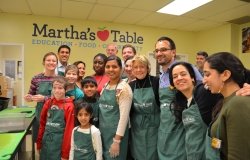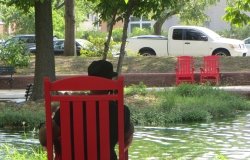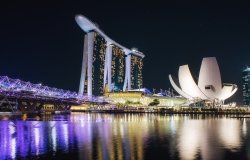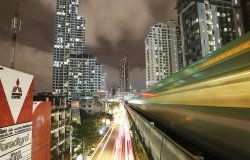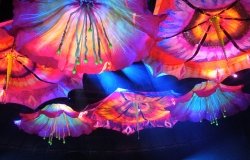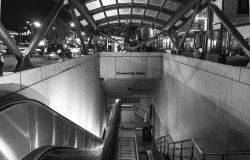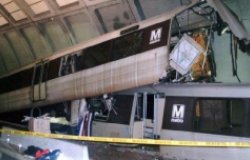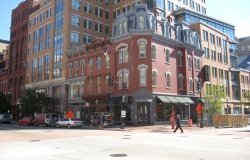The Sound of Music Is The Sound of Community Resilience
Researchers and policymakers have noted that communities which are more thoroughly integrated before a natural disaster or an outbreak of conflict and violence rejuvenate faster than those communities in which people remain distant from one another. Hefty scholarly tomes and snappy policy briefs are being churned out musing over just how the social capital necessary for sustainable community resilience can be secured. As a lazy summery evening listening to Sharón Clark -- and enjoying the company of others who share their love for her music --demonstrates, the arts can play an indispensable role in connecting people so that they can live together in resilient communities.
On a recent pleasant summer evening, my wife and I found ourselves at Washington’s Southwest Waterfront listening to a free sunset concert by one of the fabulous jazz divas of our times, Washington’s Sharón Clark. Sharón, who packs important clubs from Broadway to Irkutsk and is frequently compared by critics to Sarah Vaughn, was performing before people who know and appreciate what a special singer she is.
Many in the audience were enjoying the delicious ribs served up by a nearby barbeque stand, and most knew at least one of the stellar musicians on stage. Sharón was joined by her long-time collaborators, Chris Grasso on keyboards, Tommy Cecil on bass, Lenny Robinson on drums, and sax-master Marshall Keys on alto. Another familiar Washington musician – drummer and trumpeter DeAndrey Howard – worked the equipment mixing the sounds perfectly. Everyone on stage had grown up and studied in Washington and near-by Baltimore before heading out around the world to play with some of the biggest names in contemporary music; and all were back in D.C. adding a special magic to the gentle Washington twilight.
There is nothing particularly noteworthy about folks enjoying an outdoor concert on a summer’s eve. Humans have been gathering together to listen to music for millennia, and, in doing so, have created the sorts of connections among themselves we now speak of as “social capital.” The warm communal vibe surrounding this patch of Washington waterfront is repeated whenever rich and poor porteños gather at a Buenos Aires milonga to enjoy tango; Bluegrass musicians bring their banjos and fiddles to a nearby Smokey Mountains general story to play together and tell fanciful tall stories; township marabi masters gather in the corner of a Cape Town sheeben; and, opera singers mysteriously descend on the same central Moscow coffee shop at a time appointed by some force greater than themselves. What makes such gatherings so important is that the musicians – no matter how accomplished and renowned – are creating a moment of beauty that is shared with a community.
Researchers and policymakers have noted that communities which are more thoroughly integrated before a natural disaster or an outbreak of conflict and violence rejuvenate faster than those communities in which people remain distant from one another. Hefty scholarly tomes and snappy policy briefs are being churned out musing over just how the social capital necessary for sustainable community resilience can be secured. As a lazy summery evening listening to Sharón Clark -- and enjoying the company of others who share their love for her music --demonstrates, the arts can play an indispensable role in connecting people so that they can live together in resilient communities.
The notion that the arts enhance a community frequently finds expression in calculations of the number of jobs cultural activities bring to a community, or of the monetary value they add to local real estate. Planners from cities around the world long to replicate the success of Soho in New York where, a generation ago, artists proved to be the cutting edge of renewal, higher tax revenues, and gentrification. Even less spontaneously, politicians speaking any number of languages can’t seem to wait for star architects to build some local version of Bilbao’s Guggenheim Museum. No one can keep track of all the proposals for “arts districts” and “cultural centers” that are celebrated around the world.
In the end, Soho and Bilbao remain noteworthy because their successes can’t be replicated based on a blueprint alone. The arts, just as any other aspect of a city, can be nurtured, encouraged, and promoted but not invented whole cloth from a glossy brochure or promotional pamphlet.
The lesson offered by Sharón, Chris, Tommy, Lenny, and Marshall isn’t that grand arts projects are unimportant. They all perform, after all, in places like the Kennedy Center and Lincoln Center as well as the D.C. waterfront. Rather, they remind us that community resilience is about shared communal experience. From the beginning of humankind, the magic of music has been shared by people who might not have much else in common. The sound of music is the sound of community resilience.
Such concepts of community are not fairy-tale-like musings, but have real practical meaning. When thinking about building community and securing place in order to enhance societal resilience, policymakers and social scientists need to bring the arts into their notions of how to move ahead. They need to think about the arts not simply as monetized spectacle, but as shared experience creating and reinforcing social capital.
A few years ago far away from Washington, I found myself on an escalator leading from the platforms to the exit of one of the Kyiv metro system’s major transfer stations. About half-way up I began to hear the strains of joyous music, raucous laughter, and singing punctuated by uninhibited whistling. My imagination failed me as I tried to understand what awaited once the escalator reached the top. I stepped off into an entry hall full of dozens of seventy- and eighty-year-olds folk dancing their way to ecstasy.
The next morning I asked a colleague about what I had seen. He explained that pensioners from all over Kyiv gather every Monday evening in the station’s expansive marble-lined entry hall to dance the hours away. Centrally located, old folks from all over the city could easily meet just by hopping on the metro which retirees can ride for free. Nothing more was needed than an accordion and a bandura or two. My colleague’s own grandmother came every week to catch up with lifelong friends who had dispersed too far away to visit any other way. The retirees danced, shared stories, and offered help to one another.
In subsequent years Kyiv has been home to two revolutions, social and political upheaval, and massive economic dislocation. Somehow, though, the city continues to function and people are able to live their lives. How can this happen?
Part of the answer is to be found in the Monday evening metro dance club. Unlike many post-Soviet cities which suffer from lingering government-manipulated social anomie and alienation, Kyivians have managed to knit social support networks which help them through disruptions unimaginable in most European and North American cities.
Such social capital begins with the sort of casual familiarity found whenever humans come together to enjoy the arts. The arts are not at all frivolous in an era when generating and preserving social resilience is central to community well-being. Indeed, music and other arts may just be where resilience begins.
About the Author

Blair A. Ruble
Former Wilson Center Vice President for Programs (2014-2017); Director of the Comparative Urban Studies Program/Urban Sustainability Laboratory (1992-2017); Director of the Kennan Institute for Advanced Russian Studies (1989-2012) and Director of the Program on Global Sustainability and Resilience (2012-2014)

Urban Sustainability Laboratory
Since 1991, the Urban Sustainability Laboratory has advanced solutions to urban challenges—such as poverty, exclusion, insecurity, and environmental degradation—by promoting evidence-based research to support sustainable, equitable and peaceful cities. Read more

Urban Sustainability Laboratory
Since 1991, the Urban Sustainability Laboratory has advanced solutions to urban challenges—such as poverty, exclusion, insecurity, and environmental degradation—by promoting evidence-based research to support sustainable, equitable and peaceful cities. Read more


